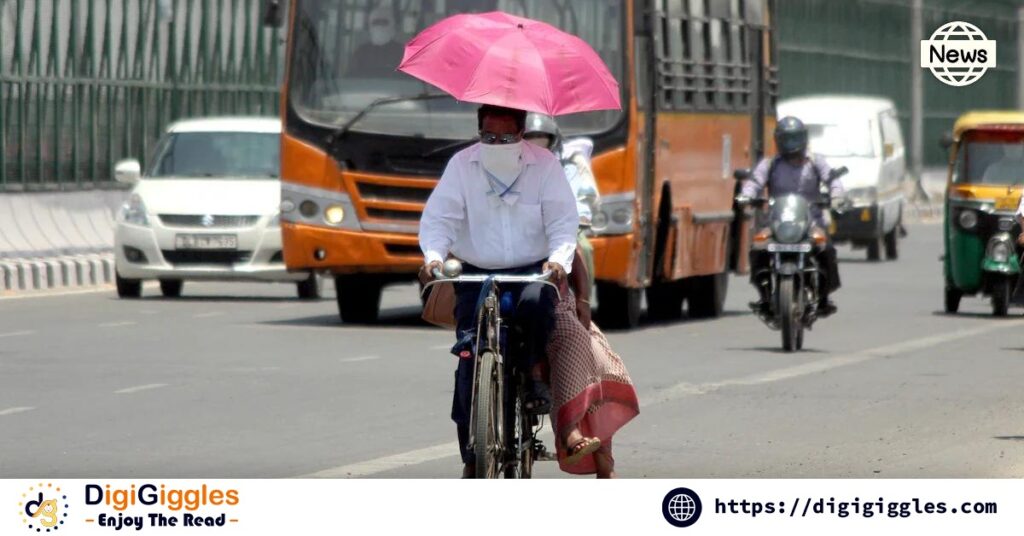
As northern and central India grappled with severe heatwave conditions, Cyclone Remal unleashed heavy rain and thunderstorms in the northeastern states, resulting in the deaths of at least 35 people. The extreme weather on both fronts highlights the diverse and intense climatic challenges facing the country.
Heatwave Grips Northern and Central India
On Tuesday, many parts of northern and central India experienced extreme heatwave conditions. The mercury soared to unprecedented levels, with Rajasthan’s Churu recording the highest temperature at 50.5 degrees Celsius. Similarly, Haryana’s Sirsa saw temperatures climb to 50.3 degrees Celsius, while Delhi’s Mungeshpur and Narela recorded 49.9 degrees Celsius, followed closely by Najafgarh at 49.8 degrees Celsius, according to the India Meteorological Department (IMD).
“Heatwave to severe heatwave conditions prevailed over most parts of Rajasthan, Haryana-Chandigarh-Delhi, many parts of Uttar Pradesh, Madhya Pradesh, and isolated pockets of Bihar and Himachal Pradesh,” the IMD reported.
The extreme heat prompted the Haryana government to advance summer vacations in all state-run and private schools to Tuesday. Meanwhile, the IMD has provided a glimmer of hope, forecasting relief from the heatwave after May 30. “Relief from the heat wave in the northwest and central parts of the country is expected after three days, thanks to an incoming western disturbance and moisture incursion from the Arabian Sea,” IMD chief Mrutyunjay Mohapatra stated. He also indicated possible thunderstorm activity in northwest India and rain in the western Himalayan region.
Cyclone Remal’s Devastation in the Northeast
Simultaneously, northeastern India faced a different crisis as heavy rains and thunderstorms triggered by Cyclone Remal wreaked havoc. Mizoram was the worst hit, with 25 people losing their lives, including 14 in a stone quarry collapse. In total, Cyclone Remal’s aftermath resulted in the deaths of 35 people across the northeastern states, with dozens more reported missing.
The cyclone caused significant destruction, forcing hundreds to seek refuge in relief camps as torrential rains demolished homes and downed power lines. In Assam, four people died, and 18 were injured due to the severe weather. Nagaland reported four deaths and damage to more than 40 houses, while in Meghalaya, two people died, and over 500 were injured as heavy downpours caused widespread damage.
Cyclone Remal made landfall in Bangladesh and adjoining West Bengal on Sunday around midnight, with wind speeds reaching up to 135 kmph along the coast. The cyclone’s impact was felt across the region, exacerbating the challenges faced by the northeastern states.
Looking Ahead
Despite the dire conditions, the IMD has forecasted some respite in the coming days. Dr. Naresh Kumar, an IMD scientist, mentioned that the severity of the heatwave would start to decrease from Wednesday. “A red alert has been issued for western Rajasthan, Punjab, Haryana, Uttar Pradesh, and Madhya Pradesh,” he said. Additionally, the western Himalayan region is expected to see the impact of a western disturbance, potentially bringing some relief.
Furthermore, the IMD predicts that the monsoon could onset in Kerala within the next 24 hours, marking the beginning of the rainy season which might bring much-needed respite from the extreme heat.
While parts of India endure the scorching heat, the northeast grapples with the devastating effects of Cyclone Remal. These concurrent extreme weather events underscore the urgent need for robust disaster preparedness and climate resilience strategies across the country.